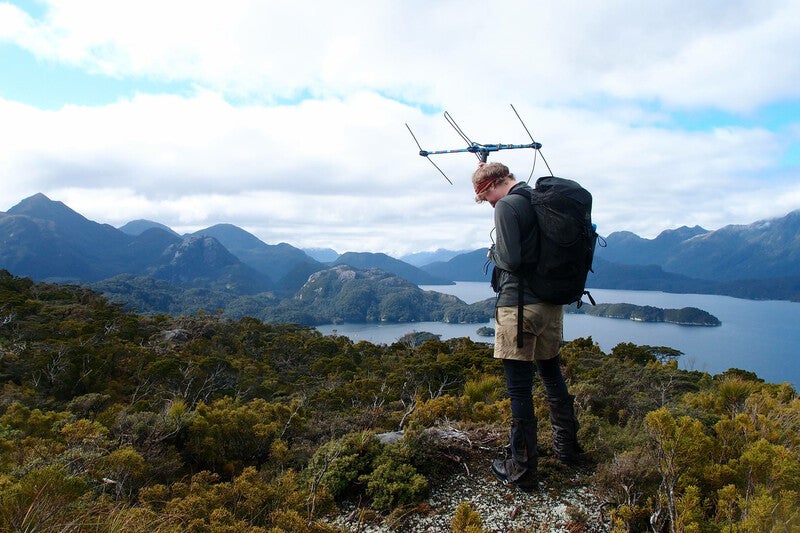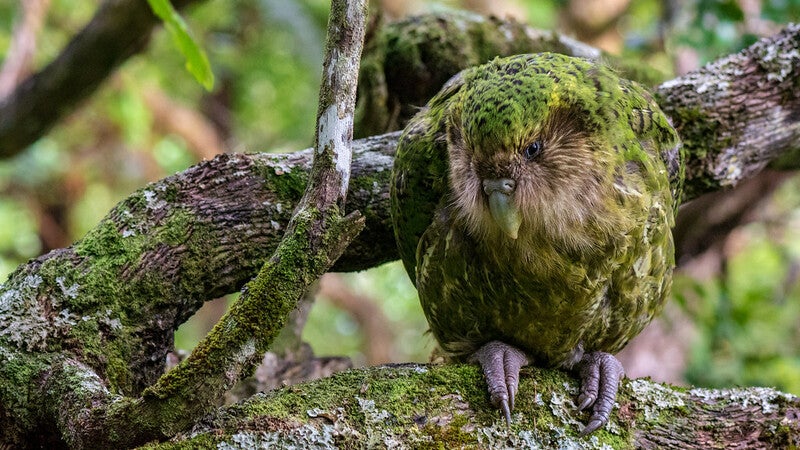New Zealand
DonateBirds of a Feather
The world’s largest parrot, a round green bird with a goofy disposition and a booming mating call.
A crazy-looking rail—the world’s largest—with a dark blue neck and a habit of “chatting” with its friends.
These are just a few of New Zealand’s wild and whimsical birds—the Kākāpō, South Island Takahē, and Kakī (or Black Stilt), respectively. Unlike birds in most other places in the world, New Zealand’s birds evolved in a place without large mammalian predators (the only native mammals are bats and marine mammals), which means they never had to defend themselves against animals like lions, or tigers, or bears (oh my!). Many species lost their ability to fly and started nesting comfortably on the ground without fear.
But the safety of these birds changed with the arrival of explorers, first from Polynesia and then from Europe. They may not have brought lions or tigers, but Polynesians brought the Polynesian Rat, which made a fast feast of bird eggs and chicks. The Europeans also brought Norway Rats and later European Rabbits, which wreaked havoc on the island’s ecology. To address the rabbit “plague,” Europeans introduced the carnivorous Least Weasels, Stoats and Ferrets (the domesticated form of the European Polecat). As a result, 20% of New Zealand’s bird species have gone extinct in historical times. Today these same introduced predators continue to decimate not only individual bird species, but ecosystems that have evolved in careful balance over millions of years.
The Re:wild Solution
New Zealand is home to species of birds, plants, reptiles, amphibians and invertebrates that are unique to the islands. Our work focuses on the recovery and restoration of these species and the unique ecosystems they call home.
Re:wild works closely with the New Zealand Department of Conservation (DOC) and other partners to protect birds whose populations have dropped sharply to just a few individuals, while New Zealand, which is a Biodiversity Hotspot, works toward Predator Free New Zealand. Through the support of conservation breeding and reintroduction programs, we are helping restore the Kākāpō and Kakī to healthy breeding populations.
By restoring species like the Kakī to large areas of their former natural range, we are working with partners to rewild New Zealand and restore the kind of balance to the ecosystems that help sustain all life on Earth.
We are part of a large project, Te Manahuna Aoraki, in South Island’s upper Mackenzie Basin and Aoraki/Mt. Cook National Park, where we work with partners on efforts to use natural barriers to remove invasive weeds. This includes 1.9-mile-high mountain peaks, ridgelines, and waterways that prevent the invasion of introduced species that choke out native plants essential to a healthy ecosystem.
At over 750,000 acres, this is one of the largest examples of a ‘mainland island’ concept to remove invasive plants and animals and restore a unique braided river ecosystem.




